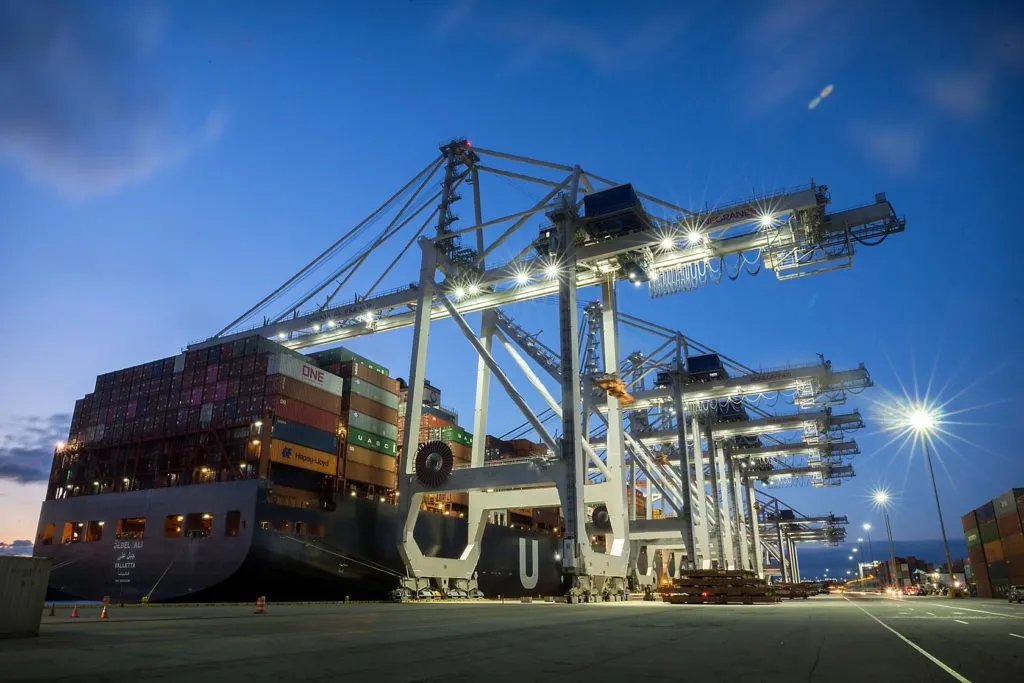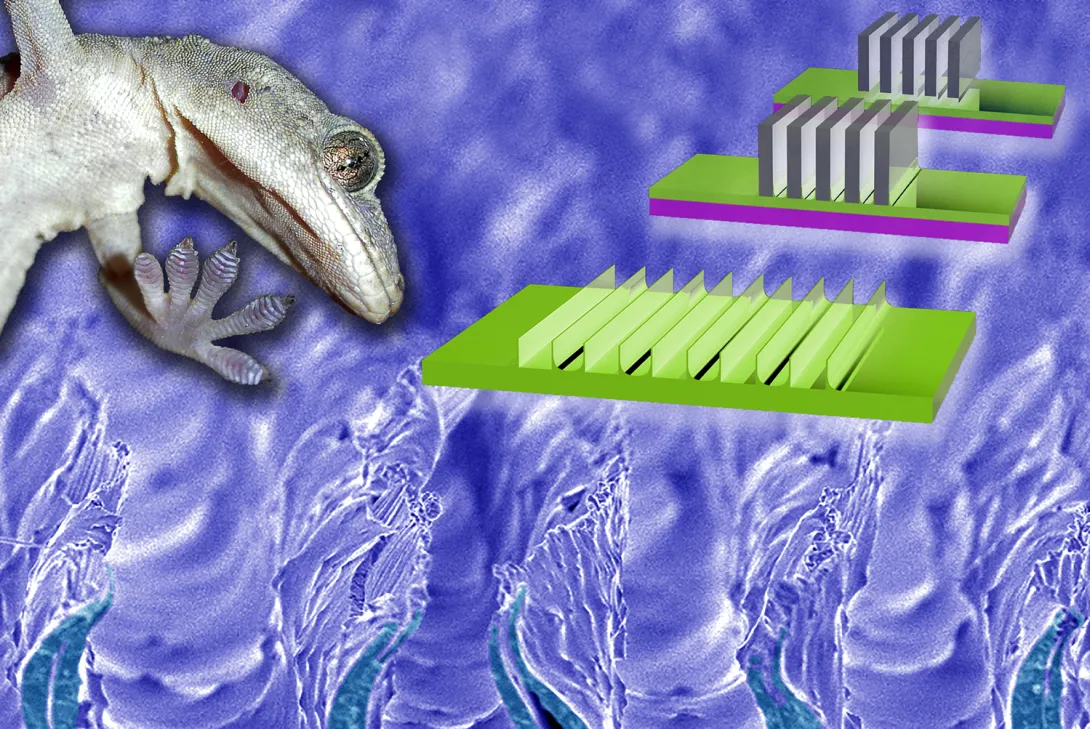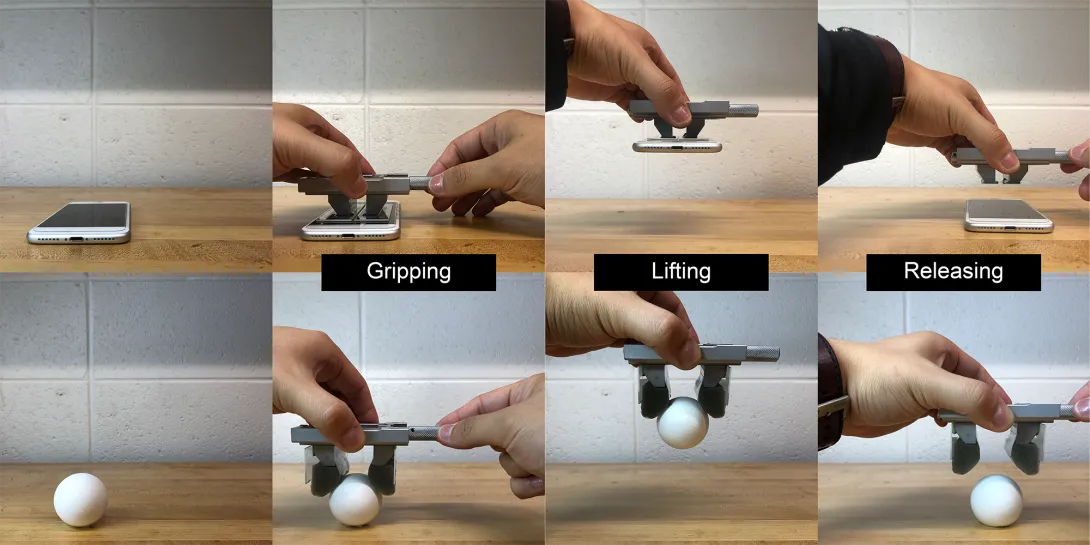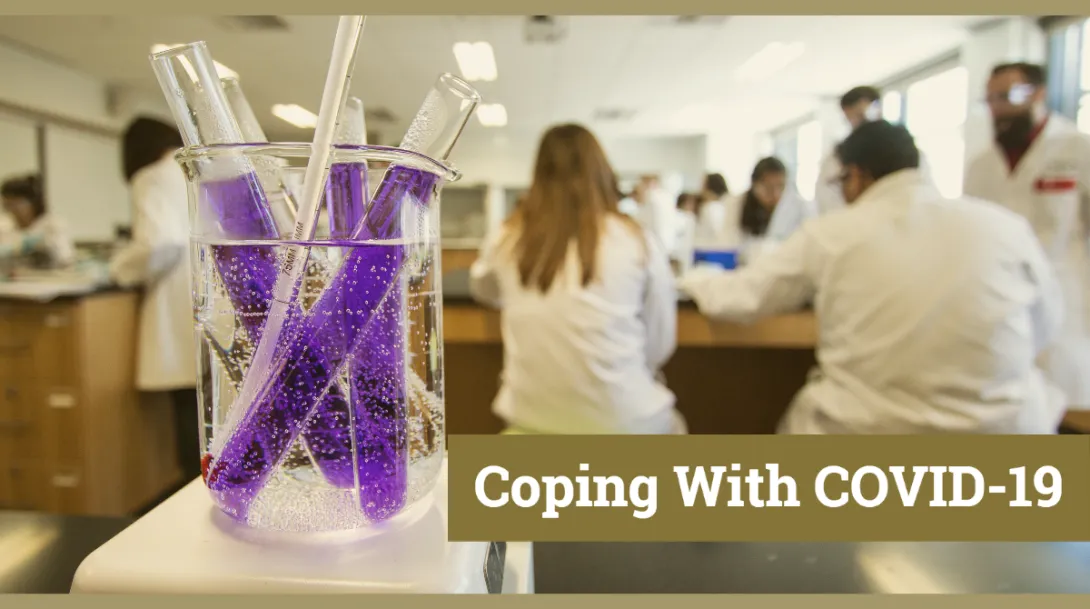May. 22, 2020
Recently, several Georgia Tech students participating in the Georgia Tech Master of Science in Supply Chain Engineering (MS SCE) program earned LLamasoft's Supply Chain Design - Level 1 (SCD-1) Credential.
Holders of the software neutral, professional credential demonstrate fundamental knowledge of core concepts of supply chain management; basic principles of optimization, simulation, and heuristics; and common practices in data transformation, modeling, analysis, and visualization. The SCD-1 exam is a 50-question multiple choice exam administered during a proctored 90-minute session. The minimum passing score is 80%.
SCL would like to thank LLamasoft for engaging students and faculty through use of its software and creation of the SCD Credential.
SCD-1 Credential Awardee Listing
- Joseph Anthony Marques
- Yogesh M Avhad
- Justin Betancourt
- Anirudhdha Chandrashekar
- Neerajsai Chandrashekar
- Kuldeep Chouhan
- Manuel Ricardo De Juan-Viscasillas
- Talia L Debenedictis
- Ashish Gupta
- Anish Gupta
- Sunadh Hegde
- Chengqi Huang
- Pallav A Jain
- Petrus Stephanus Jansen Van Rensburg
- Ayush Kumar
- Yahan Liu
- Yiguo Liu
- Adhitthyen Muthuswami Rangaswamy Kumar
- Shubham Patil
- Mukul Raghav
- Hrishikesh Ranganah
- Harshit Sabloke
- Fan Scarafoni
- Nakul J Sheth
- Jerin Varghese
For additional information relating to earning the SCD-1 Credential, please visit https://llamasoft.com/company/services/supply-chain-credential/.
News Contact
Please see LLamasoft Supply Chain Credential website.
May. 10, 2020
As the world contemplates ending a massive lockdown implemented in response to COVID-19, Vinod Singhal is considering what will happen when we hit the play button and the engines that drive industry and trade squeal back to life again.
Singhal, who studies operations strategy and supply chain management at the Georgia Institute of Technology, has a few ideas on how to ease the transition to the new reality. But this pandemic makes it hard to predict what that reality will be.
“We know pandemics can disrupt supply chains, because we’ve had the SARS experience, but this is something very different,” said Singhal, the Charles W. Brady Chair Professor of Operations Management at the Scheller College of Business, recalling the SARS viral pandemic of 2002 to 2003. But that event did not have nearly the deadly, worldwide reach of COVID-19.
“There is really nothing to compare this pandemic to,” he said. “And predicting or estimating stock prices is simply impossible, unlike supply chain disruptions caused by a company’s own fault, or a natural disaster, like the earthquake in Japan.”
For more coverage of Georgia Tech’s response to the coronavirus pandemic, please visit our Responding to COVID-19 page.
The earthquake that shook northeastern Japan in March 2011 unleashed a devastating and deadly tsunami that caused a meltdown at a nuclear power plant, and also rocked the world economy. It was called the most significant disruption ever of global supply chains. Singhal co-authored a study on the aftereffects, “Stock Market Reaction to Supply Chain Disruptions from the 2011 Great East Japan Earthquake,” published online in August 2019 in the journal Manufacturing & Service Operations Management.
But COVID-19 represents a new kind of mystery when it comes to something as complex and critical to the world’s economy as the global supply chain, for a number of reasons that Singhal highlighted:
- The global spread of the virus and duration of the pandemic. “We have no idea when it will be under control and whether it will resurface,” Singhal said. “With a natural disaster you can kind of predict that if we put in some effort, within a few months we can get back to normal. But here there is a lot of uncertainty.”
- Both the demand and supply side of the global supply chain are disrupted. “We’re not only seeing a lot of factories shutting down, which affects the supply side, but there are restrictions on demand, too, because you can’t just go out and shop like you used to, at least for the time being,” he said. “And all this is taking place in an environment where supply chains are fairly complex – intricate, interconnected, interdependent, and global.”
- Longer lead times. “We get close to a trillion dollars of products annually from Asian countries, about $500 billion from China,” Singhal said. “Most are shipped by sea which requires a four-to-six-week lead time. The fact that logistics and distribution has been disrupted and needs to ramp up again will increase lead time. So, it will take time to fill up the pipeline, and that is going to be an issue.”
- Supply chains have little slack, and little spare inventory. While manufacturing giants such as Apple, Boeing, and General Motors have more financial slack to carry them through a massive economic belt tightening, their suppliers, spread out across the globe, come in different sizes, different tiers, “and these smaller companies don’t have much financial slack,” said Singhal, pointing to a report of small and medium sized companies in China, “which have less than three months of cash. They’ve already been shut down for two months, and cash tends to go away quickly.
“Many of these companies may go bankrupt,” he added. “So we need to figure out how to reduce the number of bankruptcies. Government is going to play an important role in this, and the stimulus package the U.S. has approved will be helpful.”
Trying to get a handle on how stock markets are responding to all that has happened is like trying to take aim at a moving target during a stiff wind. Volatility has increased significantly since February 13, when the Dow Jones index reached an all-time high of about 29,500.
“That’s because we did not expect the pandemic to spread and disruptions initially were low because of pipeline inventory,” Singhal said, noting that since then the Index dropped sharply, to 18,500 on March 23 (a decline of nearly 38 percent), it picked up and was back to 22,000 by March 30. “The same is true of other stock markets. The Chinese stock market was down 13 percent, but they seem to have the pandemic under control.”
While COVID-19 is making it difficult to predict what the market will look like, Singhal has some ideas of which industries will be most affected.
“Travel, tourism, entertainment, restaurants – businesses that rely on people going out—will take a long time to recover, in terms of profitability and stock price, even once the pandemic is contained,” he said. “People are going to be hesitant to travel after all this. Tourism will take a hit.”
Essentials like groceries are surging as people stock up in reaction to being shut in, but this isn’t a long-term trend. Singhal doesn’t expect this trend to continue as shopping habits and store shelves eventually normalize.
Companies that sell basics, with a strong online presence, will do well, “but industries like automobiles and electronics, which have global supply chains and have a hard time replacing specialized, high-tech components will be affected,” said Singhal, who also has suggestions on the most important issues to address and how to help speed up the recovery and bring supply chains back to normal (or whatever normal looks like after this):
- The ability to bring capacity online, especially for small and medium-sized companies. “Facilities and equipment may need some time to restart,” he said. “Staffing is a big issue. How quickly can you get people back to work? Also, can you get the raw materials and build up the inventory to support production? That may be tough when pent up demand is being released and everybody is competing for limited supplies.”
- Distribution. Lead times already are long, he notes, and a sudden increase in demand for logistics and distribution services as everybody ramps up again could extend lead times.
- Prevent bankruptcies. Government programs need to be established (like the U.S. stimulus package) to keep small- and medium-sized firms in business. This concern extends to second- and third-tier suppliers, and large firms like Apple or Boeing or GM, should do the same for their most critical suppliers.
- Build slack. “Preserve cash, get new lines of credit or draw down lines of credit, maybe cut dividends or stock repurchases,” Singhal said. “And build inventories of critical components.”
Singhal also stresses the need for transparency, up and down the supply chain: “What that means is, companies need to have a good understanding of what is happening to their customers and suppliers, but not just their immediate, first tier customers and suppliers, but also their customers and suppliers, and so on up and down the line.”
It will be very important going forward for the next several months to monitor the health of the supply chain from both the customer perspective and a supplier perspective, because this is a new world, says Singhal, who adds an optimistic postscript, “It’s a crisis situation now, but I think we can put it back together.”
Research News
Georgia Institute of Technology
177 North Avenue
Atlanta, Georgia 30332-0181 USA
Media Relations Assistance: John Toon (404-894-6986) (jtoon@gatech.edu).
Writer: Jerry Grillo
News Contact
John Toon
Research News
(404) 894-6986
May. 07, 2020
Why did the gecko climb the skyscraper? Because it could; its toes stick to about anything. Engineers can already emulate the secrets of gecko stickiness to make strips of rubbery materials that can pick up and release objects, but simple mass production for everyday use has been out of reach until now.
Researchers at the Georgia Institute of Technology have developed, in a new study, a method of making gecko-inspired adhesive materials that is much more cost-effective than current methods. It could enable mass production and the spread of the versatile gripping strips to manufacturing and homes.
Polymers with “gecko adhesion” surfaces could be used to make extremely versatile grippers to pick up very different objects even on the same assembly line. They could make picture hanging easy by adhering to both the picture and the wall at the same time. Vacuum cleaner robots with gecko adhesion could someday scoot up tall buildings to clean facades.
“With the exception of things like Teflon, it will adhere to anything. This is a clear advantage in manufacturing because we don’t have to prepare the gripper for specific surfaces we want to lift. Gecko-inspired adhesives can lift flat objects like boxes then turn around and lift curved objects like eggs and vegetables,” said Michael Varenberg, the study’s principal investigator and an assistant professor in Georgia Tech’s George W. Woodruff School of Mechanical Engineering.
Current grippers on assembly lines, such as clamps, magnets, and suction cups, can each lift limited ranges of objects. Grippers based on gecko-inspired surfaces, which are dry and contain no glue or goo, could replace many grippers or just fill in capability gaps left by other gripping mechanisms.
Drawing out razors
The adhesion comes from protrusions a few hundred microns in size that often look like sections of short, floppy walls running parallel to each other across the material’s surface. How they work by mimicking geckos’ feet is explained below.
Up to now, molding has produced these mesoscale walls by pouring ingredients onto a template, letting the mixture react and set to a flexible polymer then removing it from the mold. But the method is inconvenient.
“Molding techniques are expensive and time-consuming processes. And there are issues with getting the gecko-like material to release from the template, which can disturb the quality of the attachment surface,” Varenberg said.
The researchers’ new method formed those walls by pouring ingredients onto a smooth surface instead of a mold, letting the polymer partially set then dipping rows of laboratory razor blades into it. The material set a little more around the blades, which were then drawn out, leaving behind micron-scale indentations surrounded by the desired walls.
Varenberg and first author Jae-Kang Kim published details of their new method in the journal ACS Applied Materials & Interfaces on April 6, 2020.
Forget about perfection
Though the new method is easier than molding, developing it took a year of dipping, drawing, and readjusting while surveying finicky details under an electron microscope.
“There are many parameters to control: Viscosity and temperature of the liquid; timing, speed, and distance of withdrawing the blades. We needed enough plasticity of the setting polymer to the blades to stretch the walls up, and not so much rigidity that would lead the walls to rip up,” Varenberg said.
Gecko-inspired surfaces have a fine topography on a micron-scale and sometimes even on a nanoscale, and surfaces made via molding are usually the most precise. But such perfection is unnecessary; the materials made with the new method did the job well and were also markedly robust.
“Many researchers demonstrating gecko adhesion have to do it in a cleanroom in clean gear. Our system just plain works in normal settings. It is robust and simple, and I think it has good potential for use in industry and homes,” said Varenberg, who studies surfaces in nature to mimic their advantageous qualities in human-made materials.
[Ready for graduate school with social distancing? Here's how to apply to Georgia Tech.]
Gecko foot fluff
Behold the gecko’s foot. It has ridges on its toes, and this has led some in the past to think their feet stick by suction or some kind of clutching by the skin.
But electron microscopes reveal a deeper structure – spatula-shaped bristly fibrils protrude a few dozen microns long off those ridges. The fibrils make such thorough contact with surfaces down to the nanoscale that weak attractions between atoms on both sides appear to add up enormously to create overall strong adhesion.
In place of fluff, engineers have developed rows of shapes covering materials that produce the effect. A common shape makes a material’s surface look like a field of mushrooms that are a few hundred microns in size; another is rows of short walls like those in this study.
“The mushroom patterns touch a surface, and they are attached straightaway, but detaching requires applying forces that can be disadvantageous. The wall-shaped projections require minor shear force like a tug or a gentle grab to generate adherence, but that is easy, and letting go of the object is uncomplicated, too,” Varenberg said.
Varenberg’s research team used the drawing method to make walls with U-shaped spaces in between them and walls with V-shaped spaces in between. They worked with polyvinylsiloxane (PVS) and polyurethane (PU). The V-shape made in PVS worked best, but polyurethane is the better material for industry, so Vanenberg’s group will now work toward achieving the V-shape gecko gripping pattern in PU for the best possible combination.
Also read: Lung-heart super sensor on a chip tinier than a ladybug
Here's how to subscribe to our free science and technology email newsletter
Writer & Media Representative: Ben Brumfield (404-272-2780), email: ben.brumfield@comm.gatech.edu
Georgia Institute of Technology
Apr. 22, 2020
Gaps in the supply of coronavirus tests are propelling initiatives to fill them across the country. At the Georgia Institute of Technology, bioscience researchers are burning the midnight oil to produce key components for tests in the state of Georgia.
The goal is to supply a broad initiative by the governor’s office involving multiple universities and partners to rapidly produce and administer more tests. At least 35 volunteers at Georgia Tech, while adhering to social distancing, are reorienting labs normally used for scientific discovery to do larger-scale production of biochemical components.
“We are inventing new ways of doing things like an electronic buddy system so people can be alone – but not alone – while they work in the lab. The technical part is actually the easiest. The logistics of testing, data security, and regulatory considerations – those things are more challenging,” said Loren Williams, a professor in Georgia Tech’s School of Chemistry and Biochemistry.
Williams and the researchers are supporting Georgia Governor Brian Kemp’s COVID-19 State Lab Surge Capacity Task Force, which is a project managed through the Georgia Tech Research Institute (GTRI). GTRI is also leading the coordination and integration of data management across the lab surge effort.
“We are providing technical and project management of the effort which is focused on increasing the state’s ability to expand testing beyond current limitations,” said Mike Shannon, GTRI’s lead in the project and a principal research engineer at GTRI.
Exoplanets and coronavirus
The science behind coronavirus testing is complementary to the researchers’ usual work. That includes understanding proteins associated with glaucoma, figuring out how RNA and DNA evolved in the first place, or whether ribosomes – lumps of RNA and protein key to translating genetic code into life – may exist on exoplanets.
Williams’ research team studies the last topic, and some of their work is related to the core of coronavirus testing, a chemical reaction that amplifies the virus’ genetic fingerprint. It is called a reverse transcription polymerase chain reaction (RT-PCR), and it transcribes trace amounts of coronavirus’ RNA code into ample amounts of corresponding DNA in the lab for easy analysis.
“His lab members are very familiar with RT-PCR, and when the lack of tests became apparent, they swung into action. The group grew from there, based on the technical needs for the project,” said Raquel Lieberman, another leading scientist in the effort and also a professor in Georgia Tech’s School of Chemistry and Biochemistry.
“Every day, very talented, hardworking people with perfect skill sets come out of the woodwork and ask to help,” Williams said.
The group has teams that engineer the production of enzymes or other chemicals needed for RT-PCR to work: Two central enzymes are reverse transcriptase, which converts RNA to DNA and Taq polymerase, which rapidly replicates DNA. Another important component is ribonuclease inhibitor, which slows coronavirus RNA decay.
Global COVID allies
Other researchers develop processes for mass production or implementation of COVID-19 safety procedures; the list goes on. Some colleagues telework; others work in labs but spaced far from each other while they wear masks.
“The group is planning to produce enough enzyme components for hundreds of tests per day,” said Vinayah Agarwal, an assistant professor in Georgia Tech’s School of Chemistry and Biochemistry and School of Biological Sciences. “Using these components, we will also build cheaper and more robust testing kits going forward.”
Instructions already exist for some of the ingredients for the test, but they are not readily available because the rights to them are exclusive.
“Intellectual property and other proprietary issues hinder our effort,” Lieberman said. “But we have received help from scientists all over the world to piece together protocols on how to make what we need.”
The state wants to increase current testing capacities by 3,000 more tests per day. The task force also includes teams from Augusta University Health System, Georgia State University, Emory University, University of Georgia, and the Georgia Public Health Laboratory. The task force lead is Captain Kevin Caspary who is with the Georgia National Guard.
Raw footage and images as press handouts for journalists. (No commercial or personal use):
https://www.dropbox.com/sh/f2wc2i74lz1lffl/AADLJ8dQnZMr4uEDxAiIMusoa?dl=0
Also read this: Interactive COVID-19 tool shows the importance of staying at home
External News Coverage:
NPR - Sun Rays, Disinfectants And False Hopes: Misinformation Litters The Road To Reopening
News-Medical.Net - Georgia Tech researchers create key components for COVID-19 tests
Georgia Tech News Center- A New Normal: Researchers Across Georgia Tech Rally to Fight COVID-19
Here's how to subscribe to our free science and technology email newsletter
Writer & Media Representative: Ben Brumfield (404-272-2780), email: ben.brumfield@comm.gatech.edu
Georgia Institute of Technology














